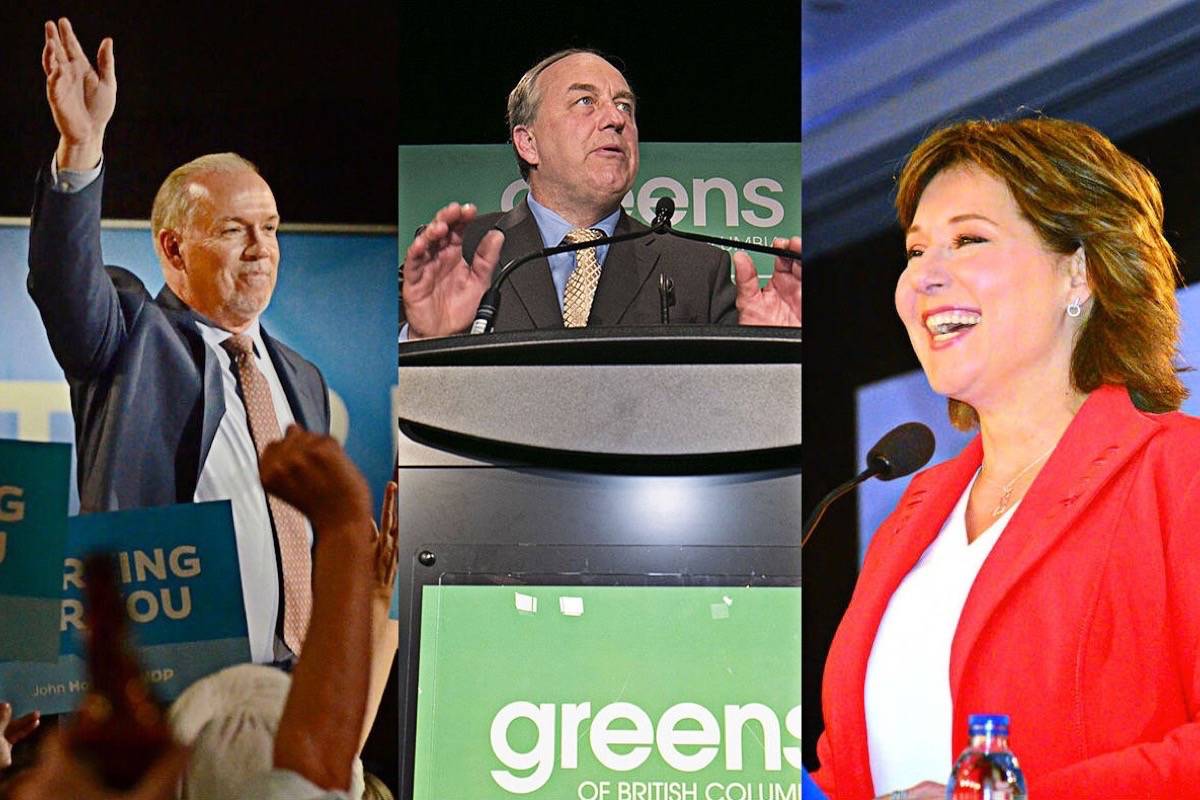VICTORIA — British Columbia’s final ballot count starts Monday to determine which party forms the province’s next government almost two weeks after election day, barring judicial recounts.
Christy Clark’s Liberals held a slight lead heading into the final count, needing only one riding to change in their favour for the slimmest of majority governments in the province’s 87-seat legislature. But the prospect of a minority government also looms large.
After the May 9 vote, the Liberals had 43 seats, New Democrats 41 and the Greens three.
All eyes over the next few days will be on the Courtenay-Comox riding on Vancouver Island where the NDP won by nine votes. The riding is the focus of an official recount as is Vancouver-False Creek, won by incumbent Liberal Sam Sullivan by more than 400 votes.
Once the results are known, political horse trading between the Liberals, NDP and Greens is expected to intensify as the parties manoeuvre towards co-operation agreements in what could be a minority government or a bare majority.
Clark and NDP Leader John Horgan have reached out to the Greens since the election. Green Leader Andrew Weaver has appointed a negotiating team and articulated three major demands: official party status along with electoral and campaign finance reforms.
“Andrew Weaver, I would say, is almost giddy with anticipation of a chance to play a role I don’t think he even dreamed about,” said Prof. Michael Prince, a social policy expert at the University of Victoria. “To get this split, 43-41, is kind of like a Hollywood movie for him.”
Weaver was the only elected Green in the legislature prior to the election, but he was re-elected along with Vancouver Island Greens Sonia Furstenau and Adam Olsen, making Canadian history for the party.
Prince said the Liberals have their fingers crossed the vote changes in Courtenay-Comox, giving them a one-seat majority, but Clark has already signalled she’s preparing to work with the Greens to preserve her government.
“But the overlaps between the NDP and the Green platforms are much more obvious and substantial than they are for the Liberals,” he said.
Weaver and Horgan have butted heads personally in the past and during the campaign, but the possibility of forming a government and wielding power has the adversaries looking to work together, Prince said.
“This is politics,” he said. “This is about policy and having an opportunity for influence.”
Glen Sanford, the NDP’s deputy director, said 60 per cent of B.C. voters rejected Clark’s Liberals and people want change.
Sanford said his own family’s political history is repeating itself in the current election drama.
His mother, Karen Sanford, served as the Courtenay-Comox member of the legislature for the NDP in the 1970s and ’80s. The riding was also subjected to a recount when her mother was in office.
At the time he was working on a fishing boat and voted in Ucluelet. Sanford said his absentee ballot was among those that gave his mother the victory.
“I remember my skipper saying it was a good thing it was a slow day for fishing, because if we had been catching lots of fish there was no way he’d have stopped to come in and vote,” he said.
Elections BC, the government agency that administers provincial elections, said almost 180,000 absentee ballots must be counted.
The final count will take place from Monday to Wednesday. Elections BC said the results will be posted and refreshed on the agency’s website starting on Monday.
– Dirk Meissner, The Canadian Press
